Openreach Save £10m on Rural UK Full Fibre Builds with Mini-Exchanges
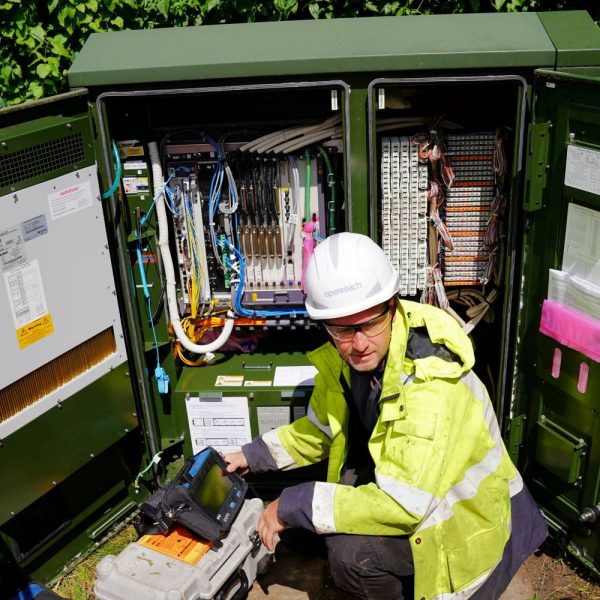
A few years ago we reported that Openreach (BT) had moved to accelerate and expand their rollout of Fibre-to-the-Premises (FTTP) broadband ISP technology into more challenging rural areas by installing “Subtended Headends” (SHE). The technology has now saved them £10m in build costs in the last year alone (Fiscal Year 22/23).
The term Subtended Head End is a bit of a mouthful, but they’re essentially mini exchanges (aka – mini-head end or mini-Optical Line Terminals [OLT]) that can be installed closer to customers inside new or existing (e.g. FTTC) street cabinets. The first pilot deployments began all the way back in 2019 (here) and they’ve since been expanded.
Engineers have now deployed around 100 individual ‘SHEs’ across the UK, connecting up around 160,000 premises (homes and businesses) that would otherwise have been beyond commercial reach, and avoiding the need to build over 1,262 km of new fibre cabling or ‘spine’. This is because SHEs (this isn’t going to get annoying to write at all) avoid the need for disruptive traffic management (fewer civil works) and are thus more cost-effective.
Advertisement
Deploying such kit and using optical signal boosting means that the operator’s new fibre optic cables can potentially be extended three times their normal reach, over 200km (in the original pilot it was 98km) – with the capacity to connect up to 1,000 additional homes and businesses from a single SHE location, while cutting up to 6 months in build time.
Openreach’s Chief Engineer, Andy Whale, said:
“Openreach has a strong track record of investing more than any other company into rural broadband upgrades. We’re rolling out Full Fibre to reach 25m homes and businesses and a quarter of that – around 6m premises – will be in the hardest to reach third of the country.
We’ve already built Full Fibre to around half of those harder to reach homes and businesses and this innovation is helping us to build faster and further into these more remote parts of the country – especially in more rural areas, on a very large scale but more efficiently and at a much lower cost.”
One example of all this is in the remote Welsh Amman valley, where seven SHEs have removed the need for 20km of fibre cable ‘spine’ – much of which would’ve been on narrow 60 MPH roads. This means the project can be completed two years early, with savings of almost £1 million.
The technology can also be installed the same way in small remote exchange buildings that are served by a main exchange – helping to extend the reach of their Full Fibre network further still.
Mark is a professional technology writer, IT consultant and computer engineer from Dorset (England), he also founded ISPreview in 1999 and enjoys analysing the latest telecoms and broadband developments. Find me on X (Twitter), Mastodon, Facebook, BlueSky, Threads.net and Linkedin.
« Administrators Report Updates on Future of Broadway Partners
ISP Grain to Build FTTP Broadband Across Part of Warrington »






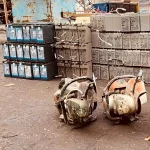
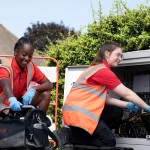

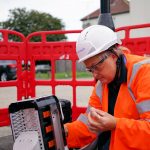
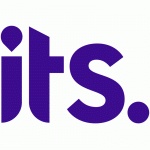












































Congrats Openreach, you’re the best and we don’t need the rest!
However, why are they celebrating this with a picture of a Huawei (I thought they are bad for your data) FTTC?
Both the DSLAM to the right and the OLT to the left (yes they are the same with different linecards and capacities) are Huawei. The Huawei OLT is the same one as unveiled back in 2019 but Openreach have also been using 1U Nokia units.
Its unclear when that OLT was installed, the batteries have a 2022 date on them but its possible that it was installed a couple years ago and the photo was taken much later.
As for Huawei you’re data is encrypted anyway.
it’s interesting that they found room for an OLT, but G.fast needed a new pod. I wonder if many more of us would have had G.fast as a stopgap if they could just bolt in a box (or better still, change a line card)
I presume also that they are using formerly “spare” fibres as the backhaul to the exchange, hence the talk of reducing the amount of work on fibre “spines” as they call it. Not enough quantity to run PON on, even if the distance was suitable, but enough for 10/40/100G ethernet
@Ivor Gfast pods are bolted on to PCP cabinets which are closer than FTTC cabs.
Interesting choice to fit a small Huawei OLT rather than using the free linecard slot in the DSLAM.
Nevermind, the spare slot is for a redundant controller card.
Aka Active Cabinet. Not exactly a new concept, most rural altnet builds are done this way.
True. Most altnets full stop and Virgin Media are building this way.
I guess the novelty is that it’s not their standard build.
It’s all good. It’s all progress.
Not at all, BT have been using active cabinets when virgin only sold records.
I presume that is what the big cabinet is up by our Aldi making a racket, it is something to do with Zzoomm, they also have smaller cabinets dotted around the estates, I presume the splitters are in them.
+ 1 Anon! This is just a active cabinet…nothing new.
How many of us are saying SHE as in “SHEE” instead of “Ess-Aitch-EE?
Can see why Mark finds it annoying
Alex A says:
August 3, 2023 at 5:56 pm
@Ivor Gfast pods are bolted on to PCP cabinets which are closer than FTTC cabs.
Should have bolted on to FTTC cabinets rather than old PCP cabinets
Why? The PCPs are closer than the FTTC cabinets so shorter line length, unpretentious for GFast.
Any PCPs which weren’t already reshelled under FTTC or already the newer style got reshelled before the pods were added.
GFast was a waste of time and money anyway. It was fairly clear that the only next step after GFast pods was FTTdp with DSLAMs on the distribution pole at which point you may as well stick a CBT on top and do FTTP rather than mess around witb GFast and reverse power feeding.
Still on Fibre To The Cabient at 34mb down and only 4mb upload from BT while a friend of mine literally stays around the corner from me and he can get the new fibre to the premises
BT Are A Joke At Times Likes
Yeah BT are lottery – you win some, you lose some, you pay the same as FTTP for FTTC.
@dontcare and, even worse, pay more for ADSL in so-called “high-cost” areas.
Well, “you” don’t, but the ISP does. Some pass that on, others (like IDNet) have simply stopped new provision in those areas.
It’s perfectly obscene, and disgusting that Ofcom have allowed it, especially on the pretence that it’s to help fund FTTP. To places that will never see it on a commercial basis.
Funny how OR rules prevent altnets from using OR dark fibre to connect an otherwise not financially viable area with a remote headend cabinet like this. Instead altnets are expected to unbundle a rural exchange and order DFX to there, and then run the 20km of spine cabling and encounter the £1mil costs knowing fine well that the exchange will be closed in the not so distant future. OFCOM needs to act or there will be little competition in rural areas through the rules that it allows Openreach to set.
Maybe I misunderstood, but I thought it was the EA (ethernet access) products that OR were unhappy with altnets using as backhaul to cabs. I’d have thought therefore that dark fibre is exactly what they would want them to use for this purpose instead? Other than PIA and running their own private backhaul cables, I mean.
By this I understand EA to mean a BTW product, where OR run the fibre, then BTW make a dedicated virtual Ethernet path through their national network from end-to-end. By not using BTW’s EA product, you are responsible for the transit between exchanges, which could be BTW as well but the traffic has to traverse your equipment to link the ‘tail’ (fibre from the cab) to the ‘backbone’ (your aggregate link(s) out of the exchange) – and not BTW’s equipment/links.
I’m happy to be corrected/re-educated on this, since it’s mostly based on knowledge gleaned from sitting on the edge of the industry, and asking questions of various people who don’t really want to reveal their secrets (or who work near but not in “that department”).
@Teqie
You can order a 10G Ethernet Access Direct (EAD) circuit from Openreach but they will charge an additional £5530 per year on top of the usual rental if it is being used for FTTP aggregation (or in other words a remote headend).
Sadly there are quite specific usage rules regarding OR DF which are hidden in the product description which is not available for public consumption. OR would very much like to not offer DF at all but it was forced upon them for OFCOM regulation. Industry has hinted to OR that they would maybe pay the FTTP aggregation charge on DF as it least it is technically unlimited capacity but OR have responded that they aren’t required to provide DF for FTTP aggregation by OFCOM so won’t.
It’s a bit weird – and speaks to OR not being really independent of BT retail or wholesale IP operations – for OR not to “want to” offer DF.
Other major fibre providers are perfectly keen to supply it where they have the capacity. After all, it’s getting them additional RoI. Makes business sense, and would for OR if they weren’t also considering “lost” revenue in other parts of BT. Which they’re not meant to do.
Can it really be described as “competition” if you need to rely so heavily on Openreach though. Between PIA and wanting to use their fibre for backhaul too, what value is an altnet actually adding, especially in an area where Openreach FTTP already exists or is going to?
At least the LLU crowd innovated by doing things that BT wouldn’t (such as ADSL2+ and pair bonding) but most altnets use the same vendors and technologies as Openreach.
I didn’t know Openreach were using XGS-PON and providing symmetrical services for consumers now?
Most Altnets are XGS-PON and offer symmetrical services so they are offering something different to Openreach even if they are using PIA. So your comment about LLU is the same as the Altnets are doing.
@Anon
As far as I know Openreach use the older GP Pon technology.
It’s a great thing I’m sure for some areas, but sadly I’m not convinced it’s going to make much difference to many up here in true rural farming country.
Even if they did the nearest fibre cabinet to me it’d still leave a financially unattractive price per premises passed to run out fibre along single track roads to houses roughly 1/2 a mile apart. Though those in the tiny cluster near the cab would be gratefull no doubt.
Don’t suppose anyone here knows what a SHE costs , ball park would be fine, just interested ?
£1000-1500 maybe, just for the card and chassis.
Hi,
I have concerns with any provider which puts active equipment in the field. I just don’t think it will have the necessary resilience in the case of power failure as batteries are rarely large enough or sufficiently well maintained to hold up for the several day interruptions which can occur in rural power networks.
I don’t think a force majeure argument from a network operator will fly if someone dies as a result of a lack of resilience (and hence non-compliance with the General Conditions of Entitlement). Remember that voice over FTTP is how we are supposed to contact the emergency services now so it needs to be reliable, even during power failures.
Whilst I can see they are a great way to get FTTP in quickly and at low cost, I expect that the fibre necessary to eliminate many of the SHEs will eventually have to be laid.
I agree, but it’s the only option that’s compatible with openreaches current plan to shut 4/5ths of Thier exchanges. We will likely see many thousands of these, commonly with 70+KM links back to parent exchanges.
I think it’s much more likely that OR will add more energy dense batteries such as li-on for say 24hr runtime and get them covered on a mobile generator contract.
Even then you have the issue of cars crashing into them as you regularly get for FTTC cabs and other issues.
The key will probably be to ensure they are small and serve only a few hundred lines each. This way with the extra battery power they are no worse than FTTC cabs which there is precedent for.
If anything, it could be more resilient than a mid-sized headend, FEX, PoP, or whatever you want to call it. The heat dissipation in that cab will be low enough to just need fans (and maybe not even that). It’s the temp rise that often gets you before the batteries run out in a larger box, once you’ve lost power for the aircon. Mobile gennies to the ready, troops!
A lot of AltNets and VMO2 have been putting active electronics into their local cabinets for years, sometimes decades. So in a way this is really just Openreach catching up (as per usual) and realising that, yes, it does have some benefits. But of course there can be caveats too.
I agree that putting active equipment in the field is not new. What is new is the environment (in its broadest sense) in which that equipment is being used.
Historically, internet access whether via ADSL, FTTC, FTTP or cable has tended to be on a best efforts basis with no-one getting too upset from a regulatory perspective if someone’s internet access is cut off for a week or two.
The reality now is that cutting off someone’s internet access is equivalent to removing their ability to dial 999 in many cases. Cutting off a community for two weeks because there is no power to a cabinet should prompt a very different regulatory response compared to that historically associated with internet access. Whether it takes a tragedy to prompt a more aggressive regulatory response is something only time will tell.
I don’t think that the industry (or the regulator come to that) has quite caught up with the new reality.
This is already the reality for the masses who are going to move to VoIP-based landline service via VDSL and who need to rely on the DSLAM to stay up. Especially once the Openreach national PSTN stop sale goes into place.
AIUI Ofcom allows all of this because the reality is that most people did not pay attention to best practice by keeping a corded phone connected/available and instead their only landline phone, if they have one at all, is a cordless one which needs power anyway thus negating any power advantage the PSTN has. Vulnerable people will be given a UPS to power the router and ONT, and anyone else can self provide if they want to.
While individual lines might take longer to be repaired (depending on what care level the customer has), loss of a cabinet is going to result in a more immediate response. FWIW something went bang for my cabinet recently. Probably not at the cabinet itself because I had sync, but could never get PPP. Fixed in less than 12 hours.
I would suspect that if BT can’t get power to one of these “SHEs” for days or weeks (how many such power cuts occur in this country? I’m rural and the longest I’ve seen was a 12 hour planned outage while they did routine maintenance to the cables), they’d have a similar challenge keeping one of those tiny rural shack exchanges online too.
Even the tiny ‘shed’ exchanges often have generators to be fair and they also obviously have more scope for battery installation than a cabinet.
I think the concern here from my view is that in a city or town you’d have mobile coverage and would need 5+ towers to go down in order to lose the ability to place an emergency call. In that context it’s completely acceptable for the cabinet to have a four hour battery. Power cuts in urban areas are much less likely and faster repairing when they do happen.
The issue is putting a battery based cabinet in rural locations which have both;
A) frequent power cuts often due to trees falling on kilometres of overhead lines, direct bury underground cables faulting due to years of water ingress or small poorly maintained transformers going bang. These fault more often than not will last longer than a battery in a cabinet, they can easily last a day or two.
B) No mobile coverage, and particularly short UPS or non generator backed towers in any case due to remoteness.
They will be putting these in some of the only areas of the country that actually use the generator facility! Many urban exchanges will have not had a generator start (except testing) in many years.
but A) would also apply to the fibres themselves – in some places it might be underground but it’s still a common sight to see shiny new fibres strung from pole to pole for miles, alongside the copper, whether they carry ethernet (for VDSL and SHE) or GPON from an exchange based OLT.
I gather that exchange batteries aren’t intended for long term use, they’re there to prop it up while either a generator comes online or the power returns within a few seconds/minutes (as it normally would). I suspect the PSTN closure would also come with a revisiting of power arrangements – if not outright building closure (Openreach’s aspirations to get down to at least 1000 exchanges is well publicised here)
I don’t know if BT has actually done it, but they could conceivably install a generator plug and changeover switch for SHEs – and I feel like if they were actually up against a multi day power outage, they’d find a way to do that, just as the electricity companies do for businesses and vulnerable customers…
Does anyone know what is on the backend of the SHEs? e.g. 10 GigE to the main HE Exchange?
I’ve read that 16 port SHE linecard requires two spare fibres for backhaul to the HE Exchange. So in the case of a single linecard SHE with 2 x 10GigE as backhaul, how would this compare with a full-size OLT in an HE Exchange? e.g. would a full size OLT with say 8 linecards in a HE Exchange have 16 x 10 GigE on the back end?
10g for the remote SHE, 10 or 100 for exchange SHE
How easy to upgrade the remote to 100G?
10G isn’t going to cut it for XGSPON though I assume the backhaul is off the controller card so both need swapping unless the line card is combo XGS/GPON ports.
Nokia units support up to 8*10GB uplink ports. Dont know about Huawei X2 units but probably less due to space constrains until dslams are decommissioned.
Thanks! An 8 channel LAG would certainly do for 16 combo ports
The headend side (visible here https://www.linkedin.com/posts/garry-colbert-1044a9103_openreach-subtendedheadend-fttp-activity-6976600533096615936-rm4J ) looks to be a qsfp+ connector per remote OLT, presumably being broke down to 4xSFP+ at the remote OLT. 40gig of capacity so would match up with the 40gig of GPON connections on a 16 port line card.
Open reach are an absolute joke I need my house swapping to fiber because I am on the old copper system and my signal is very poor we only have two telephones and Netflix and our signal keeps dropping out about sixty times a day sky keep putting the job out to open reach we get a day of work to be carried out and on the day they don’t turn up and they can give no answer for it absolutely mystery sky are sick of them so are we this has been going on for wait for ot ten years not good and no one can help they are a world unto themselves.
Is fibre actually available to you?
Openreach have done millions of installs of both hybrid and full fibre: not sure why you’d be so problematic. Checker might be broken for your address.
https://www.openreach.com/broadband-network/fibre-availability informative?
We have bt broadband with copper cable ,it is so slow 600 kbps when we are supposed to be guaranteed 1 mb. It takes up to 2 days to download a Netflix film,.Thought we had cracked it he other day when EE took over the call and guaranteed 20 mb with a mobile router we got less than the 600 kbps.
The Universal Service Obligation is 10Mbps so you should demand that from your provider/BT. My friend had 1.5Mbps broadband and BT proactively offered him 4G via EE with no change in costs to meet the USO and it was a huge improvement. It was OK but dropped a lot and the wireless router/hotspot needed rebooting. It was solved by a rural micro-ISP arriving on the scene and connecting him to fibre, fed from an active cabinet backhauled by a leased line. When they had a two-day power cut, the ISP was on-site with a portable generator within hours. It can be done, just not by Openreach.
The way the government attempted to roll out fire has delayed things considerable. WE now have about 50% of the population can get FTTP but there is a huge amount of overbuild which is largely wasted time and effort which could have gone into areas that currently do not have FTTP
The government could have put out a tenders to supply FTTP perhaps 9 tenders one for each of the English regions. They should have also laid down technical standard to avoid hat happened with Cable TV. This approach would have been lower costs an faster to deploy, It would also ensure that BT/Openreach had competition. To later in the day now. though. WE will also now get the disruption of many of the alt nets going out of business
Unfortunately a lot of these altnets were built so they passed as many premises as possible in as short as time as possible so they would be attractive for takeover making their initial investors a quick buck in the process.
30 years too late.
Are there any external markers added to existing cabinets to identify if an SHE is now present? The cabinet near me now has a sticker that says ‘danger 230v’, etc.